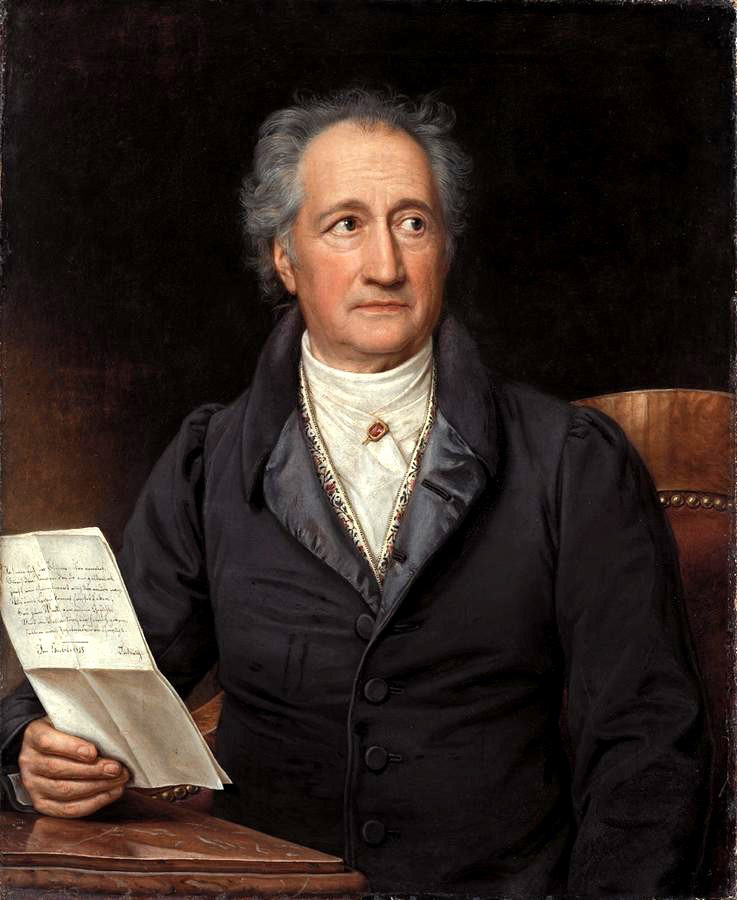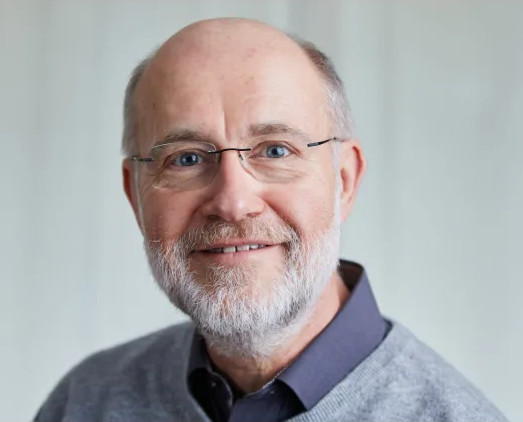Kaiser Karl der Große
Durch Zufall konnte ich eine Vorfahrenlinie bis zu Karl dem Großen zurückverfolgen. Er taucht in meiner Ahnenliste daher aktuell 29 mal auf, zum ersten mal in Generation 40 mit der Kekulé-Nummer 1.686.967.297.612. Das ist gar nicht einmal so ungewöhnlich, da er vor rund 1200 Jahren gelebt habt und deshalb die meisten heute lebenden Europäer von ihm abstammen dürften. Ungewöhnlich ist dann eher, dass man diese Abstammung auch tatsächlich belegen kann.
Catharina Schenck zu Schweinsberg
Catharina Schenck zu Schweinsberg wurde zwischen 1530 und 1535 geboren und starb am 30.04.1576 in Dagobertshausen. Schenck zu Schweinsberg ist der Name eines zum hessischen Uradel zählenden Geschlechts, das noch heute zur Althessischen Ritterschaft gehört.
Sie ist meine Vorfahrin in Generation 13 (Ahneneltern) mit Kekulé-Nummer 12.569. Ihr hier abgebildeter Grabstein befindet sich in der Westwand der Martinskirche in Michelbach bei Marburg. Ihre Vorfahren lassen sich über den niederen Adel und Hochadel bis zu den deutschen Kaisern des Mittelalters zurückverfolgen.
Ahnengemeinschaft mit
Prof. Hermann Staudinger
Der bekannte Chemiker und Nobelpreisträger Hermann Staudinger (1881-1965) ist mein Halb-Ururgroßonkel 8. Grades. Interessanterweise bin ich mit ihm über die gleiche Person verwandt, über die auch meine Ahnengemeinschaft zu Goethe besteht. Unser letzter gemeinsamer Vorfahre ist daher also ebenfalls Daniel Lyncker (um 1528-1598). Er trägt die Kekulé-Nummer 12.568 in meiner Ahnenliste und die Kekulé-Nummer 540 in der Ahnenliste von Hermann Staudinger.
Herzlich Willkommen auf unserer Ahnenforschungsseite!
Die Geburt unserer Tochter im Jahr 2006 habe ich zum Anlass genommen, um mich ernsthaft mit dem Thema Ahnenforschung zu beschäftigen.
Wie sich mittlerweile herausstellte, stammen meine Vorfahren tatsächlich fast ausnahmslos aus der Region Oberhessen (Mittelhessen).
Dies erwies sich schnell als großer Vorteil, da die Vorfahrenlinien so auf wenige Orte eingegrenzt werden konnten. Die meisten meiner
Vorfahren lebten in der Gegend um Homberg (Ohm), sowie den Gemeinden Mücke und Gemünden (Felda) im heutigen Vogelsbergkreis. Die meisten Wohnorte
lassen sich grob auf das Gebiet zwischen den Städten Gießen und Schwalmstadt eingrenzen. Die Hauptorte sind dabei
Bleidenrod,
Weickartshain,
Nieder-Ohmen,
Elpenrod,
Ober-Gleen und
Maulbach.
Die häufigsten Nachnamen sind unten auf dieser Seite zu sehen.
Die örtlichen Kirchenbücher wurden meist erst im 17. Jahrhundert begonnen, so dass für frühere Zeiten kaum Quellen vorhanden sind.
Da Oberhessen eine sehr ländliche Gegend ist, waren die meisten meiner Vorfahren von Beruf Landwirt (auch "Ackermann" oder "Bauer" genannt).
Es kommen aber auch einige typische Handwerksberufe vor, wie z.B. Schreiner, Schmied, Schuhmacher, Maurer, Schneider und Weber, außerdem auch einige Schäfer.
Da meine Ehefrau aus Zeitz in Sachsen-Anhalt stammt, tauchen hier aber auch noch vollkommen andere Orte und Namen auf. Ihre Vorfahren stammen aus Oberschlesien, Thüringen, Sachsen-Anhalt, Sachsen, Bayern, Baden-Württemberg, Böhmen und Mähren.
Viel Spaß beim Stöbern auf unserer Seite wünscht
Sven M. Berg
P.S.: Für Berichtigungen, Ergänzungen oder Anregungen zu den hier veröffentlichten Daten sind wir jederzeit dankbar.
Hinweise zur Darstellung:
In der Regel entsprechen alle Daten dem heute gültigen Gregorianischen Kalender, welcher offiziell im Jahr 1582 von Papst Gregor XIII. eingeführt wurde.
Da es sich bei Oberhessen aber um eine vorwiegend protestantische Gegend handelt, galt hier bis zum Jahr 1700 noch der Julianische Kalender. Um sich vom Papsttum abzuheben, wurde im Jahr 1700 zunächst der sogenannte Verbesserte Kalender eingeführt, der zwar vom Datum her gleich war, aber eine andere Berechnung des Osterfests hatte. Dabei wurden im Jahr 1700 die zehn Tage zwischen dem 18. Februar und dem 1. März einfach ausgelassen. Daher beziehen sich alle Angaben bis zum 18. Februar 1700 noch auf den bis dahin gültigen Julianischen Kalender. Auf den 18. Februar 1700 folgte damals direkt der 1. März 1700, so dass alle Angaben ab diesem Datum dem Gregorianischen Kalender entsprechen. Erst im Jahr 1775 wechselte man auch offiziell zum Gregorianischen Kalender, da in den Jahren 1724 und 1744 das Osterfest in evangelischen und katholischen Gebieten an unterschiedlichen Tagen gefeiert wurde.
Alle Personen sind wie in der Ahnenforschung üblich immer mit ihrem jeweiligen Geburtsnamen erfasst worden.
Datenschutz:
Aus Datenschutzgründen werden keine Daten von lebenden Personen angezeigt. Dort erscheint lediglich der Begriff "Lebend" ohne weitere Angaben.
Ahnengemeinschaft mit
Johann Wolfgang von Goethe
Durch einen gemeinsamen Vorfahren bin ich mit dem berühmten Dichter Johann Wolfgang von Goethe (1749-1832) verwandt. Genauer gesagt ist er mein Halb-Ururururgroßonkel 6. Grades. Unser letzter gemeinsamer Vorfahre Daniel Lyncker (um 1528-1598) trägt die Kekulé-Nummer 12.568 in meiner Ahnenliste und die Kekulé-Nummer 250 in der Ahnenliste von Goethe. Daniel Lyncker war außerdem in erster Ehe mit Catharina Schenck zu Schweinsberg (siehe links) verheiratet. Sie gehört allerdings nicht zu Goethes Vorfahren, da seine Vorfahrin Daniel Lynckers zweite Ehefrau Ursula Weigel ist.
Ahnengemeinschaft mit
Prof. Harald Lesch
Dass ich mit dem bekannten Astrophysiker Harald Lesch (*1960) verwandt bin, habe ich schon fast erwartet, da er genau wie ich aus Nieder-Ohmen stammt. Wie sich herausgestellt hat, ist er mein Cousin 7. Grades. Interessanterweise stammen aber unser letzten gemeinsamen Vorfahren Matthäus Lein (1718-1795) und seine Ehefrau Anna Helena Becker (1728-1793) nicht aus Nieder-Ohmen, sondern aus Bleidenrod. Sie tragen die Kekulé-Nummern 416 und 417 in meiner Ahnenliste und die Kekulé-Nummern 396 und 397 in der Ahnenliste von Harald Lesch.
Ahnengemeinschaft mit
Prof. Max Planck
Über die Familie Orth bin ich mit dem bekannten Physiker und Nobelpreisträger Max Planck (1858-1947) verwandt. Da er mein Urgroßonkel 11. Grades ist, muss man schon bis ins 15. Jahrhundert zurück gehen, um zu unseren letzten gemeinsamen Vorfahren zu kommen. Es handelt sich dabei um das Ehepaar Johann Orth (1460-1533) und Adelheid von Endebach (* um 1470), welche in meiner Ahnenliste aufgrund zahlreicher Orth-Vorfahren sogar 17 mal vorkommen. Ihre niedrigsten Kekulé-Nummern lauten 17.616 und 17.617 in meiner Ahnenliste. In der Ahnenliste von Max Planck tragen sie die Kekulé-Nummern 4.544 und 4.545.

 Deutsch*
Deutsch*  English
English Français
Français Italiano
Italiano Español
Español Português
Português Nederlands
Nederlands Polski
Polski Čeština
Čeština Slovenčina
Slovenčina Dansk
Dansk Svenksa
Svenksa Suomi
Suomi Norsk
Norsk Íslenska
Íslenska Magyar
Magyar Românește
Românește Hrvatski
Hrvatski Slovenščina
Slovenščina Српски
Српски ελληνικά
ελληνικά Türkçe
Türkçe






